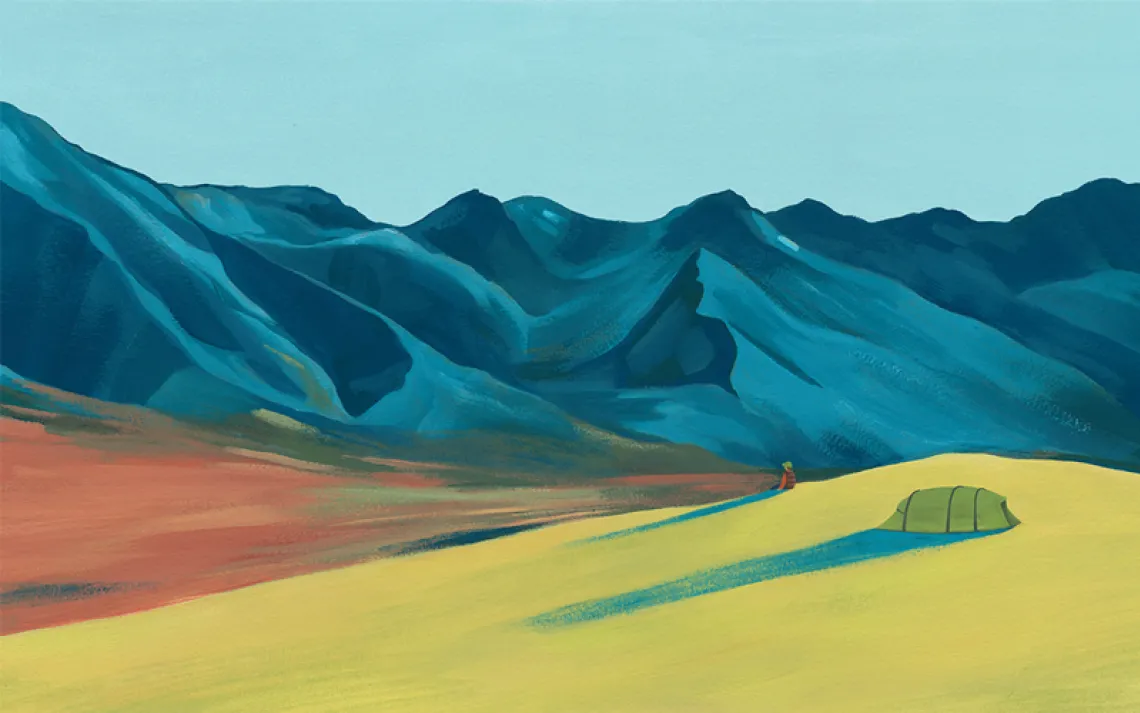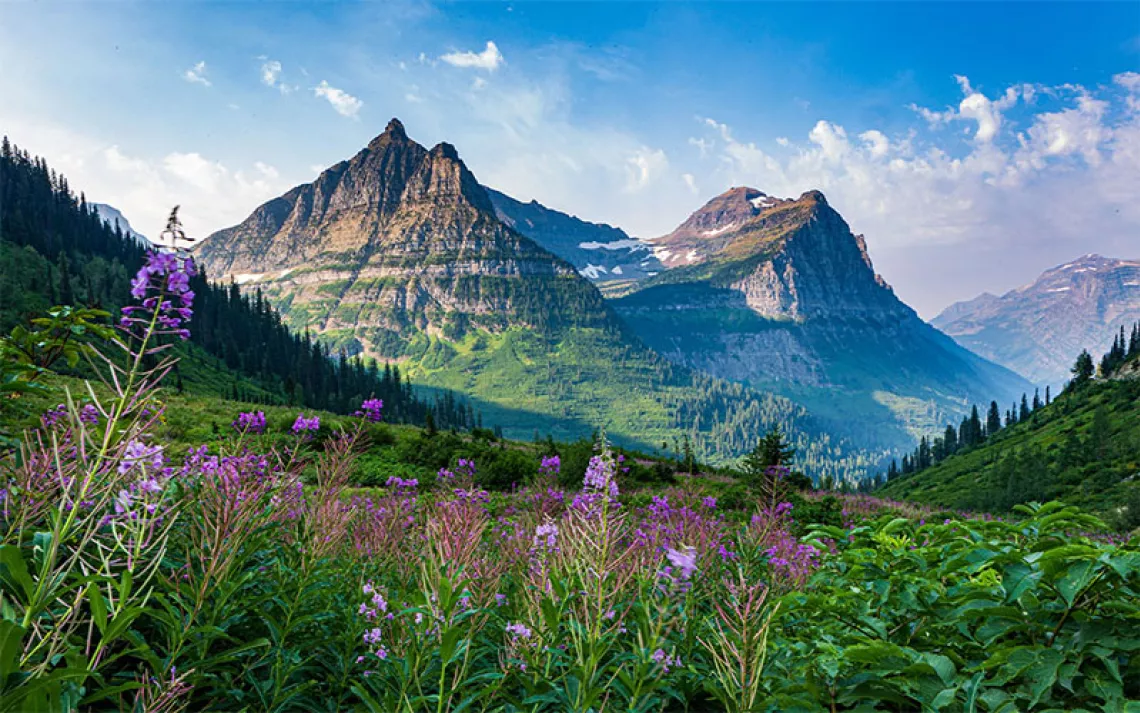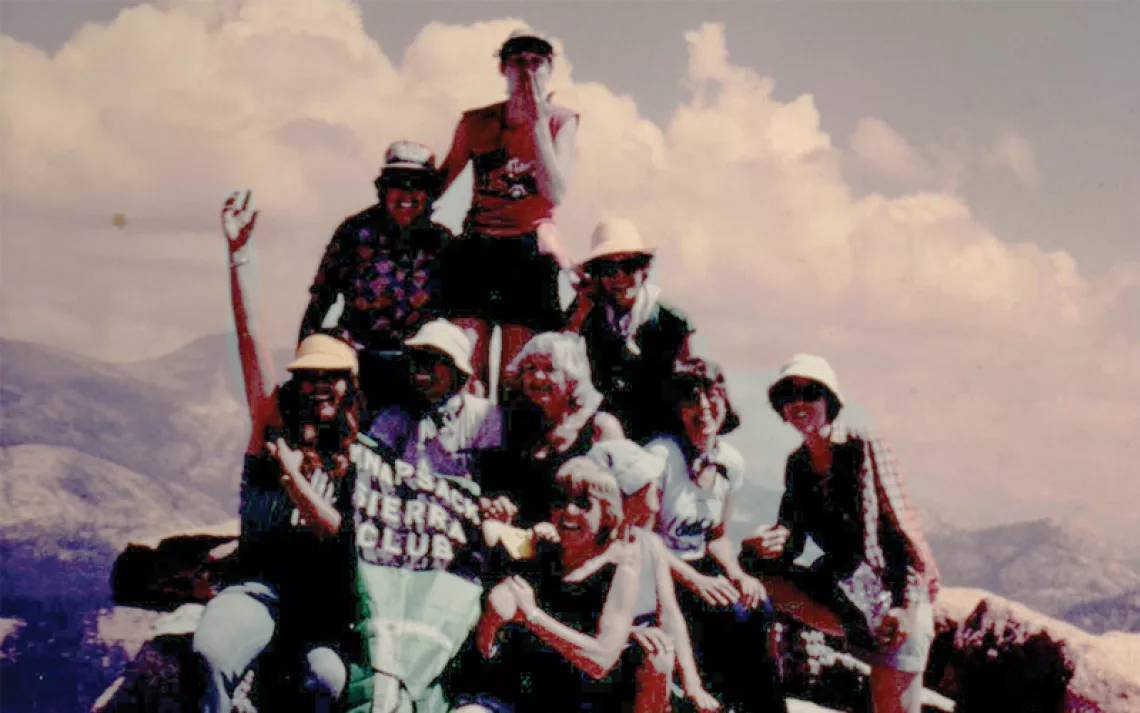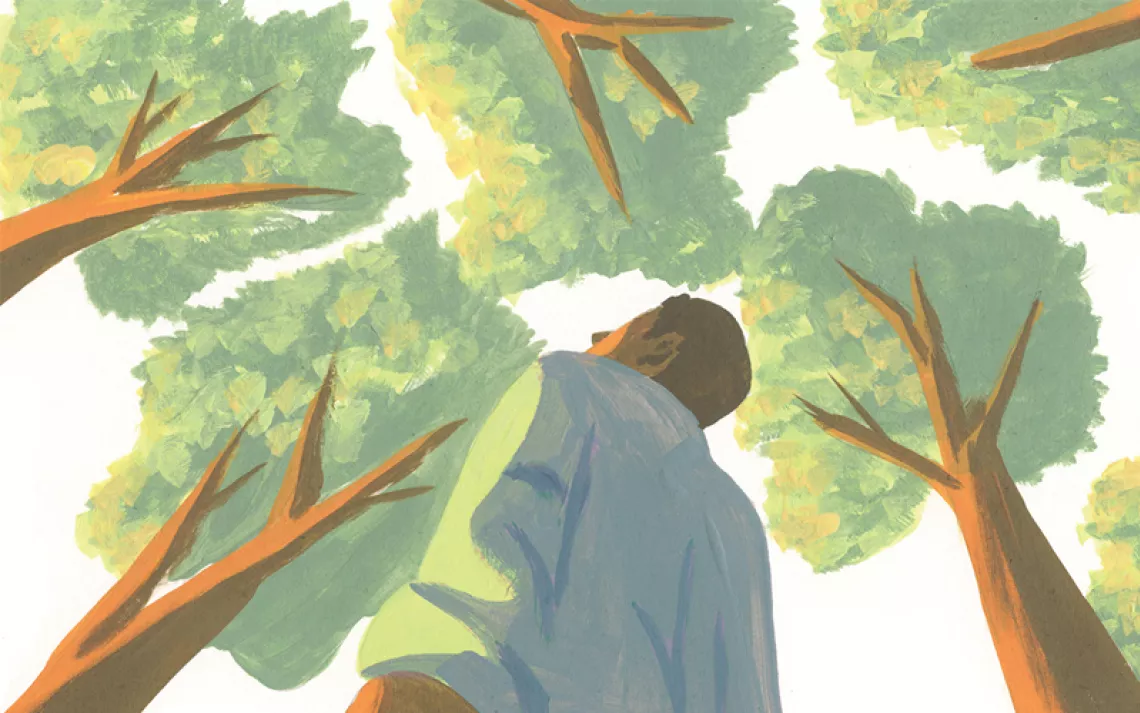Life, Death, and Winter
Tracking predators in Glacier National Park
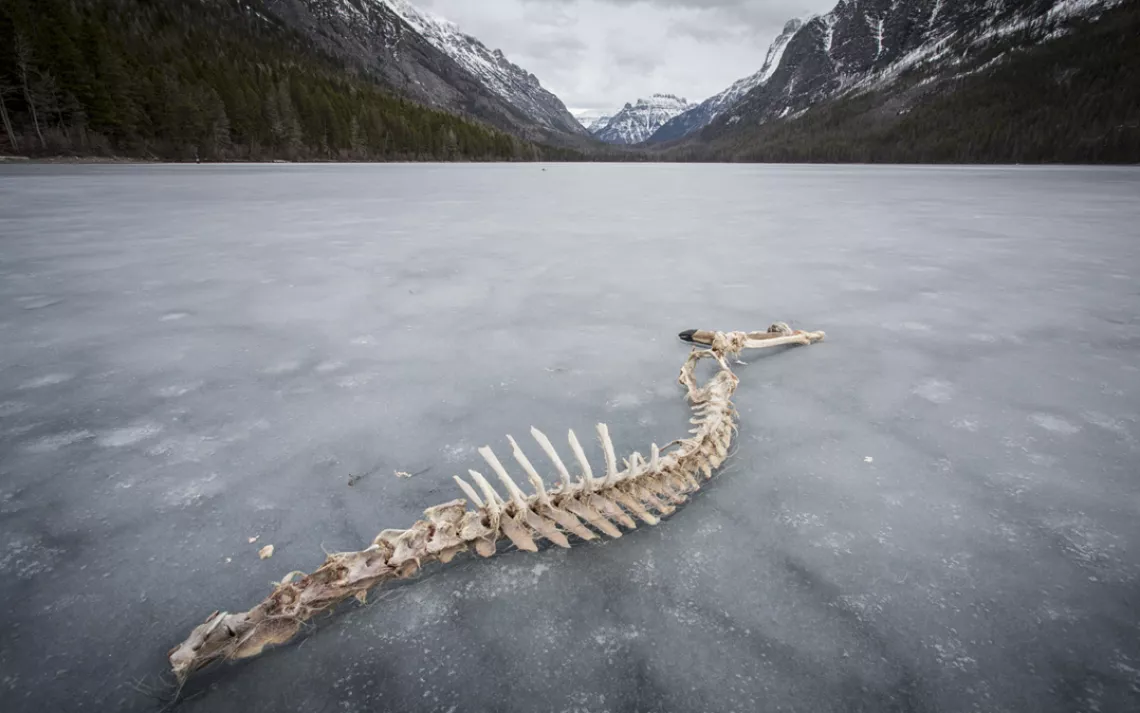
Frozen Kintla Lake, in Glacier National Park, is often littered with carcasses left by wolves.
THE WOLVES APPEARED LIKE PHANTOMS, five of them spiriting across the frozen lake to a thrust of rocks onshore. Travis, Ben, and I crouched nearby, unseen in forest shadow. The largest wolf picked up a scrap of a carcass, bones joined by sinew. The wolves were romping, yanking the bones back and forth, when a howl erupted from the forest behind us. They responded, tilting their heads back in unison, their wails joining with the others, coming from everywhere at once and engulfing the mountain valley. Then they started heading toward us.
"Uh, guys," Travis said in a pinched whisper, "there's a pack of wolves coming straight at us."
"Yes!" Ben and I breathlessly exclaimed together.
Travis, who seemed to have less enthusiasm for our situation, stood up to retrieve ski poles from his pack. (He would later tell us that he did this for protection.) The wolves detected us immediately. We found ourselves in a stare-down.
For 10 years, we've skied into this back-of-beyond valley, wedged between icy peaks in one of the most remote corners of Glacier National Park, for one wildlife study or another. Glacier and its surrounding wildlands—a regal ecosystem known as the Crown of the Continent—is perhaps the most wildlife-rich region remaining in the continental United States. It's a land of sprawling, roadless areas crawling with wolves, mountain lions, grizzly bears, and their abundant prey. In its heart lies the wildest valley of all, where carnivores gather in astounding numbers. It's a remnant of an untamed world that once existed.
The first winter, Ben and I came here alone. I was working as a tracker on a carnivore study for local biologists, skiing into new mountains each day on the trail of lynx, fishers, and wolverines. Ben was a writer and park employee who often volunteered to accompany me. Though we're both originally from cities, we'd moved to Montana for adventure and had fallen in love with the wild. When we were given the task of skiing into Kintla Lake, we didn't know anyone who'd been there in winter. We only knew it was a 45-mile drive on rough dirt roads, glazed with snow and ice, before we could put skis to feet. We knew there was a river to ford and a five-mile ski into a hidden valley where two long, slender lakes slid between 10,000-foot mountains. We'd heard about the valley's strange snow shadow and how the consistent scarcity of snow, regardless of the 10-foot depths nearby, attracted deer in incredible numbers. With the deer came the wolves, lions, and, rumor had it, a grizzly that skipped hibernation in favor of feasting on the ungulate buffet.
Before we set out, a biologist had told us, "Be really bear-aware, especially with all the wolves up there." She had explained that lions and wolves were master predators of deer and elk, but even a wolf pack could be chased off a kill by a grizzly. We were little more than oversize kids enamored with toothy animals, and this sounded like heaven.
It was immediately clear after we forded the river and started skiing that cold January morning that this was no ordinary wildlife-packed valley. An unending parade of carnivore tracks sprayed the snow, all of which I dutifully recorded with GPS coordinates in a notebook. Nearing the lake, we crossed the snow shadow, an invisible line where, due to the surrounding mountains or some unexplained meteorological phenomenon, the snow suddenly diminished to a few inches. White-tailed deer watched from behind every tree. The baying of a wolf emanated from the forest.
"There's something running across the lake!" Ben cried.
I dropped my GPS and notebook like they were on fire, raised my binoculars, and watched a large black wolf running to the forest with its tail straight and legs blurring beneath it. Then we saw the deer carcass on the lake in front of the small, shedlike cabin where we would be spending the night. We skied to where it lay on its side, blood and entrails crimson against the white snow. This was one of many lessons from that winter, the romanticized wild replaced by the cruel but operatically beautiful reality.
The next day, we glided onto the perfectly flat, white sheet of the lake for the six-mile traverse to its head, where a century-old ranger cabin sat tucked into shoreline trees. Wolves had howled through the night, and only sanguine snow remained where the deer had been, though we found its skull a mile down the lake. To the wolves, it was a toy with a chewy center; the brain is a prized portion of any prey.
Wolf tracks were omnipresent as we skied across the thin stratum of snow on lake ice. Bits of deer—scraps of hide, femurs, a rib cage—were always in view. Wolves eat 10 percent of their weight in meat daily, which translates to about a dozen deer per month for a pack of seven wolves, and it was clear that they'd been meeting their quota. (We imagined a lake bottom thick with skeletons.) Other echoes in the snow told of a bold snowshoe hare that had crossed the lake. Then a moose. Finally, a grizzly, its dinner-plate-size tracks leading directly across the center of the lake. Ben and I high-fived and checked the bear spray in our hip pockets. The stories were true. There was a winter grizzly.
When we reached the cabin, bear tracks led directly to the front door and stalked the perimeter of the building. Apparently it wasn't the first time, as the thick bars over the windows and the protective, porcupine-style wall of nails stabbing through the front door attested. Any thoughts of this being overkill were banished when we saw the gouges from claws and canines on the timbers holding up the porch roof. After unlocking the door and sparking the wood stove, we grabbed an ax and headed out to chop a hole in the lake ice for water.
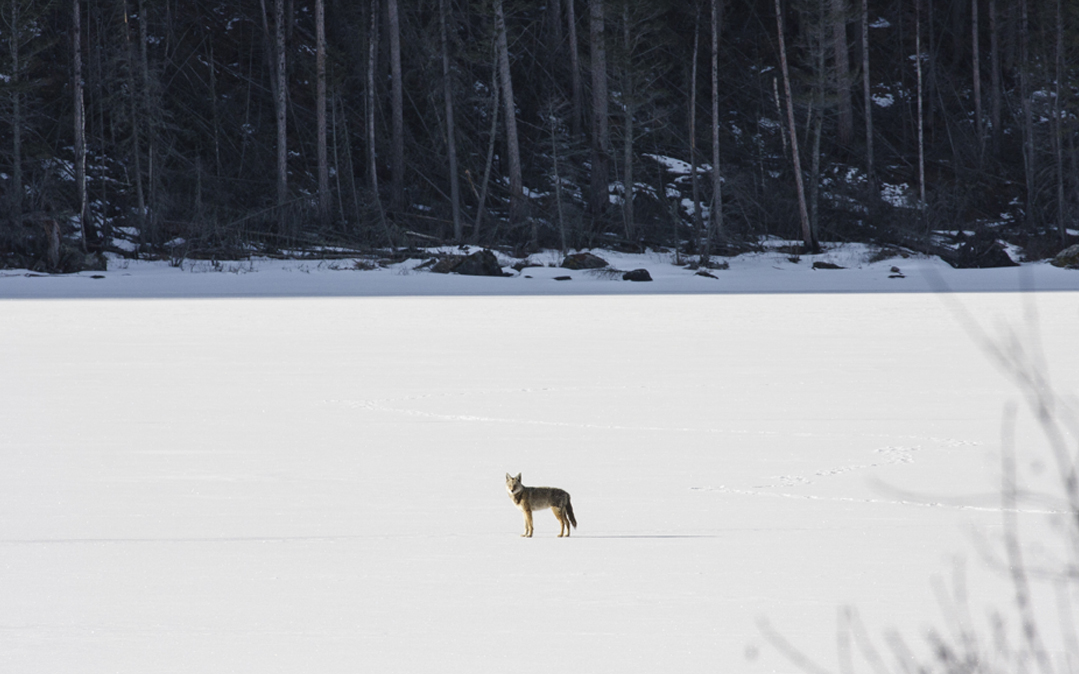
A coyote watches from the frozen head of Kintla Lake. Wolves dominate the valley, but there's ample prey for a panoply of predators.
THE NETWORK OF BACKCOUNTRY CABINS in Glacier National Park was built in the years after its founding in 1910. (The National Park Service was established soon after, in 1916.) As is the case with many land-protection efforts, officials initially had their hands full with disgruntled residents unhappy with the new park's restrictions. Patrol cabins were built from logs felled on-site and were staffed by mountain-men rangers, who patrolled for poachers, loggers, and other backwoods scofflaws. Today, they are most often used by wildlife researchers, like the ones from the University of Montana who first documented the return of wolves in the early 1980s.
Amid the hullabaloo over wolf reintroduction in Yellowstone and the Rockies, one critical fact has gone largely unrecognized: The wolves in Glacier came back on their own. After their extirpation from Montana in 1930, a pack of gray wolves wandered over the border from British Columbia around 1980 and became the first wolves in the American West in half a century. Fittingly, they were called the Magic Pack. The wolves we see in Glacier today are their descendants, as are the several hundred other wolves that now howl across the Northern Rockies. Which is why some biologists here argued that the reintroduction effort was unnecessary. Wolves were coming whether we wanted them or not.
THE GLACIER WOLVES ARE THOUGHT to have come from Banff National Park, 200 miles to the north—a testament to the value of national parks as strongholds of biological diversity. At first, the wolves settled just north of Glacier in British Columbia, until increased logging and oil exploration in the unprotected lands there pushed them south and they denned in the undisturbed safety of the park. National parks were originally created as tourism playgrounds, where natural beauty could be preserved for recreation by vacationing urbanites. Parks-as-ogling-reserves certainly have value, but as the country developed and species were increasingly driven to near extinction (see: bison, grizzlies, wolves), U.S. parks found a new role as reservoirs of wildness, where once-extirpated wildlife could safely rebuild their populations.
Today, the Glacier wolves teach us that when we, the planet's over-industrious primates, step back and leave it alone, nature heals itself with remarkable vigor. When we give wolves and other wildlife room to roam, they take it.
What we now call wilderness was once simply the world. Our ancestors evolved here. Our neural architecture formed in these places where wolves and bears and lions thrived, where life was hard and the air was clean. In our new, human-created world, we have many wonderful things—I love Thai food and poetry as much as the next 21st-century sensitive male—but without time back in the world we're from, we go insane. In wilderness, we're home.
THAT FIRST TRIP LAUNCHED our 10-year obsession with the Kintla Valley, and we've returned winter after winter on various wildlife and patrol efforts for the park, always with cameras and notebooks at the ready to document whatever strange and grisly things we see. The rise of citizen science in recent years has boosted the work of park biologists and allowed us to assist on various carnivore studies. Our trip last winter was focused on fishers, the elusive cat-size member of the weasel family. We had the unglamorous task of hauling in hunks of raw venison and an impossibly odiferous lure made of skunk essence to mount on trees alongside hair snares and motion-activated cameras.
Every trip starts with a crossing of the North Fork of the Flathead River, best appreciated by its Kootenai name: Wolftail River. One of the last great free-flowing rivers of the West, it forms Glacier's western boundary. Its fast, cold water is barely above the freezing point and rushes over a bed of algae-slick rocks, so crossing is always an adventure. We've forded au naturel and with garbage bags over our legs, but last year, being theoretically wiser and undeniably older, we used proper chest waders. Then we were in the wolves' world, and the snow, nature's archivist, was a maze of animal tracks.
"I love this," Travis said. "It's like the story of the whole winter."
As we skied, I noticed the meat lashed to Ben's pack dripping blood onto the snow.
"Think that's a problem?" he asked.
Eyeing fresh lion and wolf tracks, Travis quipped, "Yeah, I think when you ski into Kintla, you generally don't want to be leaving a trail of fresh blood as you go."
As we neared the foot of the lake a few hours later, the water looked like, well, water. The lake is different each winter, and it had been a strangely warm one, but it's never been unfrozen. We couldn't tell if it was actually ice until I hucked a softball-size rock and watched it skid across the surface.
Eager to avoid a six-mile trudge in ski boots to the cabin at the head of the lake, I found continuous ice from shore and began cautiously moving along it, punching holes with my pole and feeling the ice's thickness with my fingers. Trusting the ice awls on a lanyard around my neck—picture ski pole handles with sharp carbide tips—to help me pull myself out of the mortally cold water if necessary, I headed out. Seeing me not plunge to my death, the others soon joined me.
Nerves on fire, we poled furiously like it was some kind of poling Olympics, propelling ourselves across ice so clear we could see boulders and colored patterns of rocks on the lake bottom below. Bizarre pinging and popping noises like science-fiction-movie laser gunfire shot from our skis along cracks in the ice. These were scary, but then came the actual cracking noises. Skydiving would have been more relaxing.
The ice harbored the usual assortment of body parts, eagles and ravens picking at the scraps in the distance, nothing wasted. Everywhere wolf tracks were frozen into the ice like insects in amber.
Then we found something we'd never seen before. Ben waved me over to where the leg of a mountain lion lay on the ice. Wolf packs follow lion tracks and will gladly kill a feline if they can catch it. If a lion happens upon a lone wolf, the lion won't hesitate to return the favor. You could say they act like cats and dogs.
Just then, somber moaning carried from the forest.
The next two days were spent nailing meat to trees, listening to lupine howls, and trying to pawn the skunk essence off on one another. We spent quality time sitting by the lake drinking hot liquids and simply listening. There were the calls of ravens and pygmy owls and the sound of wind rushing through mountain and forest. Inevitably, the ice-capped lake joined the chorus like a living thing, its resonant, otherworldly bursts of sound like whales singing deep below the surface.

Sign up to receive Sierra News & Views
Get articles like this one sent directly to your inbox weekly.
With this action you affirm you want to receive Sierra Club communications and may vote on policy designated by the Sierra Club Board.
One night, Travis chose to sleep just outside the cabin. In the morning, we found fresh lion tracks in the snow leading within two feet of his head.
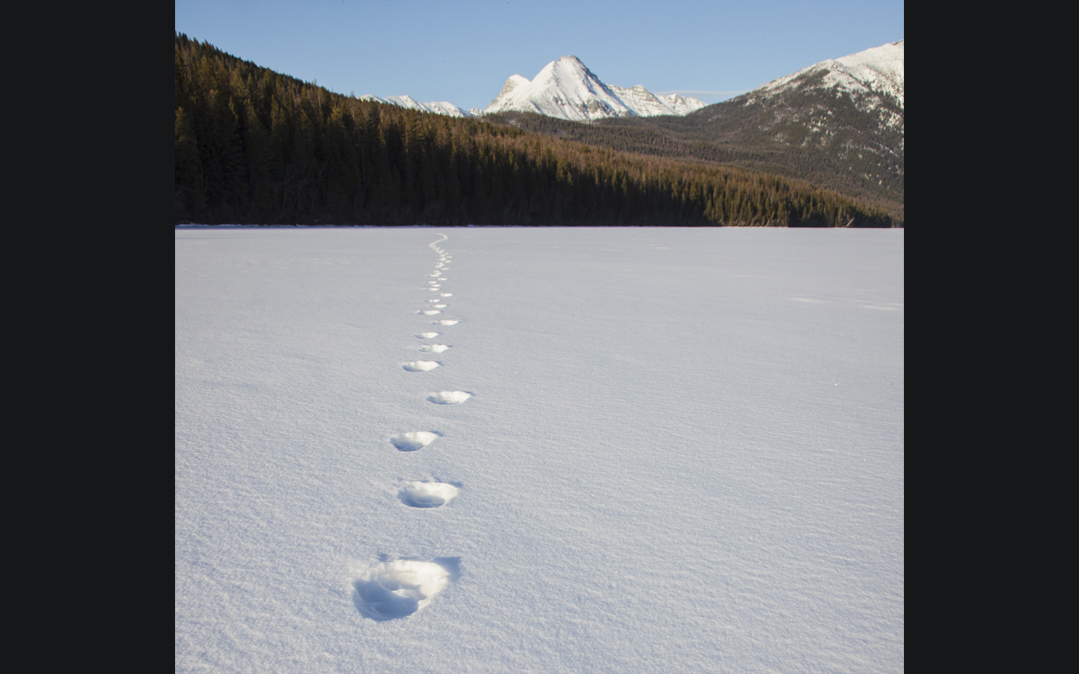
Wolf tracks lead across the surface of Kintla Lake, with the peaks of British Columbia in the background.
NO EXPERIENCE AT KINTLA, however, has been as thrilling and intimate as our accidental stare-down with the wolf pack a few years ago. After assessing the three of us huddled together on the forest edge—Travis holding his ski poles, Ben watching through binoculars, me shooting pictures with a tragically inadequate zoom lens—the wolves trotted off the lake and into the forest at our side. We waited, listening. Howling erupted somewhere near us, and we looked at one another, silently cheering with our wide eyes. Then all was quiet. We were three miles from the patrol cabin, and the sun had already slid behind the mountains. We started walking back along a trail paved with frozen wolf tracks. We hoped to reach the cabin before dark and hear more wolves along the way.
Only one of those things would happen. As we hiked, I drifted behind, as is my wont, to take photos of the mountains, all white marble rising into the twilight. Then a wail carried from the inky forest next to me. The wolves hadn't left. It's true that wolves rarely attack humans, and I was more excited than scared, but it did occur to me that they are hardwired to look for a group's slowest, most vulnerable member. I promptly corrected my blister-induced limp and focused on projecting an air of fitness. I began using my poles more dramatically. Not even wolves would mess with a giant praying mantis.
But then the howling grew more intense, and I couldn't help but stop to record it. A second wolf answered from shockingly close. I froze. Only 20 feet behind me, where the howl came from, the trail disappeared around a blind turn. If the wolf emerged from that bend, we would be able to smell each other's breath. Then the distinct sound of claws clacking on rocks came from another direction.
From just around the blind corner a stick snapped, and with it went my nerve. I became a speed-walking praying mantis as other wolves joined the howling, until a bellowing, shrieking, ghoulish chorus filled the air, drowning out everything and consuming all of my senses. I don't care how much you love wolves, when you're standing alone in a dark forest, surrounded by a pack of them howling, after two days of looking at their prey's bloody carcasses, you'll be forgiven for getting a little jumpy.
I walked on, the wolves deafening now, until I saw the soft yellow light of the patrol cabin window a few hundred feet ahead. Laughing a quiet, awed laugh, I stopped again, the cabin instilling a sense of security. Ben and Travis came out to make sure I was OK, the wolves still howling like mad. We all stood together and listened. We were still, and probably always will be, big kids enamored with toothy animals.
This article appeared as "The Wildest Valley" in the November/December 2015 print edition of Sierra.
Click to join a Sierra Club winter trip in the Northern Rockies.
 The Magazine of The Sierra Club
The Magazine of The Sierra Club
